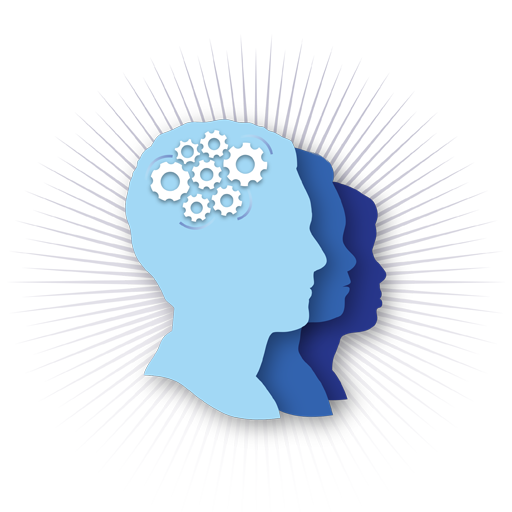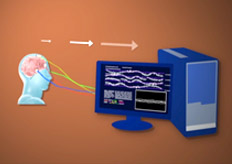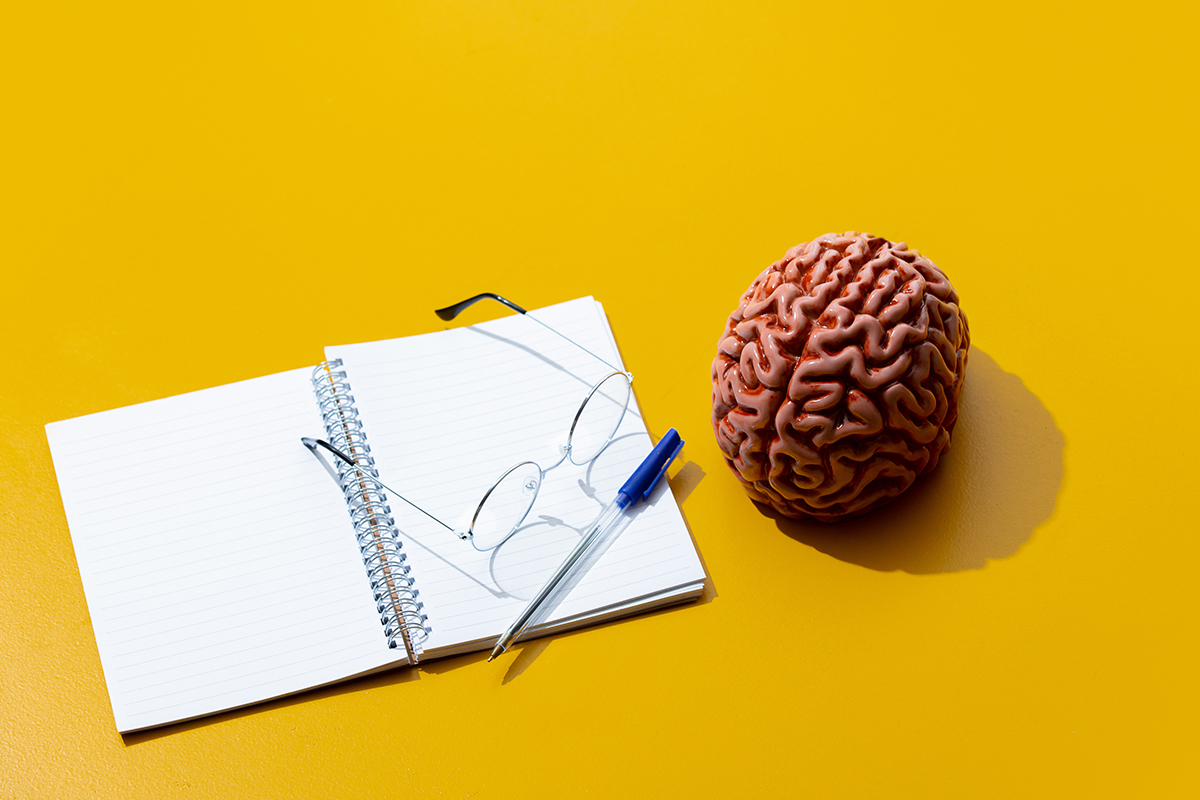
The History of Neurofeedback: Part I
How does Neurofeedback work? Why is it so effective in treating brain conditions as varied as ADHD, traumatic brain injury, seizures and learning disabilities? And so on. In the interest of answering these and other questions, we thought we’d start with the history of this remarkable, non-medicinal treatment for the brain known as Neurotherapy now available in Chicago.
Learn More
Summer Classes Forming Now
Cognitive Solutions offers one on one and group programs in the summer aimed at developing students’ processing abilities, executive functions, and academic weaknesses. Our programs are highly individualized, and designed to help our students reach their full potential. Our programming is designed for students diagnosed with Attention Deficit Disorder (ADD or ADHD), learning disabilities (dyslexia, dysgraphia, dyscalculia), or executive functioning difficulties in Chicago, Illinois. Contact us at 773-755-1775 or info@helpforld.com for more information on our summer remediation programs.
Learn More
The Screen Time Debate
Screen Time: How Much Is Too Much?
Ari Goldstein, Ph.D.
Look around in any waiting room, restaurant, or public space filled with children who are required to wait for a period of time. What percentage of those children are engaged in conversation or play? How many are reading quietly to themselves? Now, how many are hyper-focused into a screen? What is it about these devices that so engages children and creates this need? To better understand this, we need to explore both the biological and the behavioral underpinnings of this ubiquitous trend.
How many of us, as adults, is guilty of constant engagement with our screen devices. Of course we deem much of it “work”, including our facebook surfing and engagement with a range of vapid entertainment. Who do our children look to as role models for their behaviors?
From the perspective of the brain, screen devices are awesome! They provide fast paced stimulation to the brain, and frequently contain a series of rewards or level development that further engage the brain. This rapid stimulation tells the brain to release more “feel good” neurochemicals such as serotonin.
Parents come in to my office on a daily basis expressing concerns over their children’s constant need to be engaged with a screen of one form or another. This is a double edged sword. Electronic communication is everywhere, and the adults of the future will need to be proficient in their usage and able to adapt with the technology. Children model their parents and friends behaviors, and everyone around us is engaged with a screen of some sort. While as parents we need to manage the amount of screen time our children have, we need to be aware of the benefits of some of the programs as well as the importance of technological literacy. The rule in my home is no screen time during the week unless it is directly related to homework. Then on the weekends we allow our kids a couple hours per day to engage in the screens of their choice. Most of the research done on the subject agrees that less than 2 hours per day of average screen time is not associated with any negative behavioral or cognitive patterns.
Certain forms of screen engagement can also be very positive, and challenge cognitive skills. There are several very good research based online programs designed to develop a range of cognitive skills, including executive functioning, memory, and attention. Many games also require a high level of strategy, planning, and visual spatial problem solving (think Minecraft). Encourage your children to engage in the types of games which require them to focus, think, and plan ahead.
By managing the amount of screen time and the content itself, this entertainment method can become a powerful tool to sharpen your child’s mind and ensure their technological proficiency as they enter adulthood.
At Cognitive Solutions Learning Center in Chicago, we work with children and adult who have been diagnosed with a range of learning disabilities (Dyslexia, Dyscalculia, Dysgraphia) and Attention Deficit/Hyperactivity Disorders. Our approach includes a range of non-medicine based treatments and interventions, and we work with parents to ensure that their children can grow to their full potential.
Learn More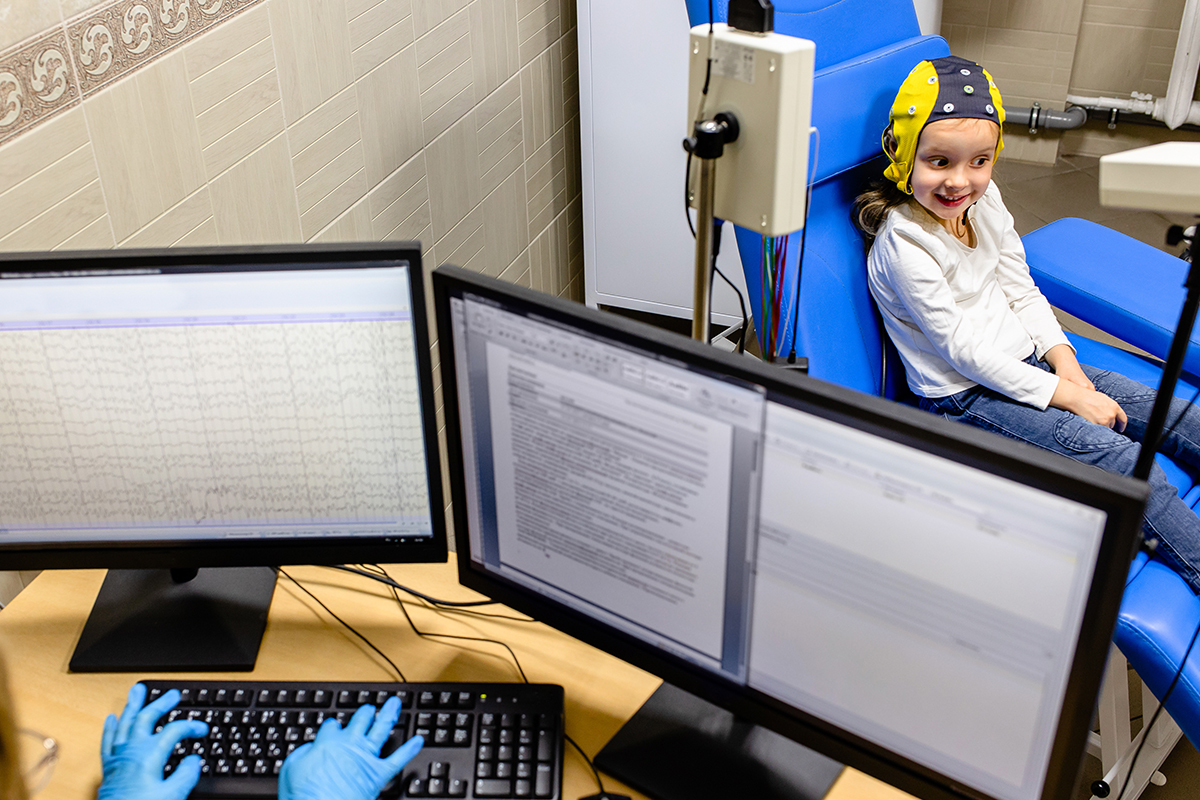
Neurofeedback: Science or Shamanistic Ritual?
Neurofeedback: Science or Shamanistic Ritual?
By Ari Goldstein, Ph.D.
The human brain is a fascinating organ that constantly seeks to improve itself. The capacity of the brain to grow and develop in response to environmental stimuli is magnificent. From trepanation to phrenology, behaviorism to psychoanalysis, man has sought to better understand this splendid organ. As we begin the 21st century, our knowledge of the brain continues to grow and develop at a rapid pace. Technology allows us to understand and improve how the brain functions in manners never before thought to be possible. One of the ways current science allows us to understand how the brain functions is through analysis and normalization of the electrical patterns created by the brain. The process of reading and analyzing the brain’s electrical patterns is known as a Quantitative EEG. The data provided through this process helps individuals and their clinicians understand how their brain is functioning and processing information, thereby allowing for much more targeted clinical interventions.
When I was a psychology student in College, we were taught that the brain does not grow much in adulthood. As the understanding of the brain and neuronal functioning has increased, we now know that the brain is highly capable of adapting and growing even into old age if given the right stimulus. The process of EEG Neurofeedback involves teaching the brain to grow and develop more efficient patterns of functioning. Through a series of games and activities played while connecting their brain to the computer, individuals learn to better self-regulate and improve the efficiency of their brain function.
I was first introduced to EEG Neurofeedback by Dr. Sam Effarah, and my thinking around learning and the brain changed dramatically. I was able to very clearly see quantitative data on how the brain was functioning, and saw how we could gain an amazing amount of very functional and actionable knowledge from a Quantitative EEG assessment. I also began to see the tremendous value in teaching people to regulate their own functioning through neurofeedback in a much more meaningful and lasting way. Clinicians could very clearly see patterns in the brains of individuals diagnosed with ADD/ADHD, learning disabilities, anxiety, depression, and autistic spectrum disorders that were different from the average brain. Often times, the frontal lobe of the brain in individuals with attention difficulties has far too much of the slow wave known as “Theta”. This can cause a state of cognition known in scientific terms as “La La Land”. A fast spindly wave known as “High-Beta” was often seen throughout the brain of those with hyperactivity and anxiety. Disconnections between areas of the brain that process auditory and visual stimulus often become apparent through the Quantitative EEG in those diagnosed with learning disabilities.
When we began using EEG data to drive some of the work we do at Cognitive Solutions, the level of skepticism among our colleagues and patients was high. It was almost as if we were practicing some form of shamanistic ritual to help people. As time went on, more and more people began to try it out. We had patients referred to us with a range of symptoms, including attention disorders, learning disabilities, anxiety, depression, and autism spectrum disorders. Most patients reported improvement in a range of symptoms after completing only a few sessions. Some took more time to see improvement, but those who stuck with it generally reported significant improvement in their functioning over time.
The research on Neurofeedback is strong (isnr.org). While detractors would note the lack of double blind studies, a host of solid research studies into neurofeedback show quantifiable evidence of improvement for a range of brain based dysfunctions. Anecdotal cases can be found all over the world for individuals who have seen improvement for a range of symptoms affecting their daily functioning. The American Psychological Association has consistently given higher and higher efficacy marks to this treatment as more and more solid research has been conducted.
At Cognitive Solutions Learning Center in Chicago, we have worked with thousands of patients using neurofeedback over the past fifteen years. Most have seen tremendous benefits in quality of life as a result of this treatment. As I have watched the science catch up to what I have seen personally in our clinic, I am glad to have discovered this amazing intervention tool. From shamanistic ritual to true science, it appears that neurofeedback is a viable and drug free option for many patients to treat a range of brain based symptoms.

Natural Treatment For Attention Deficit Disorders Without Medication
When I was growing up in the 1970’s, there were always boys who were hyper. They couldn’t control their behaviors, responded impulsively to everything placed in front of them, and acted as if driven by little motors constantly running full speed inside their bodies. There were also boys who stared off into space on a regular basis, seeing a whole movie playing behind their eyes. There were girls who flitted around the room like social butterflies, and those who gazed out the window seeing a movie of their own.
Learn More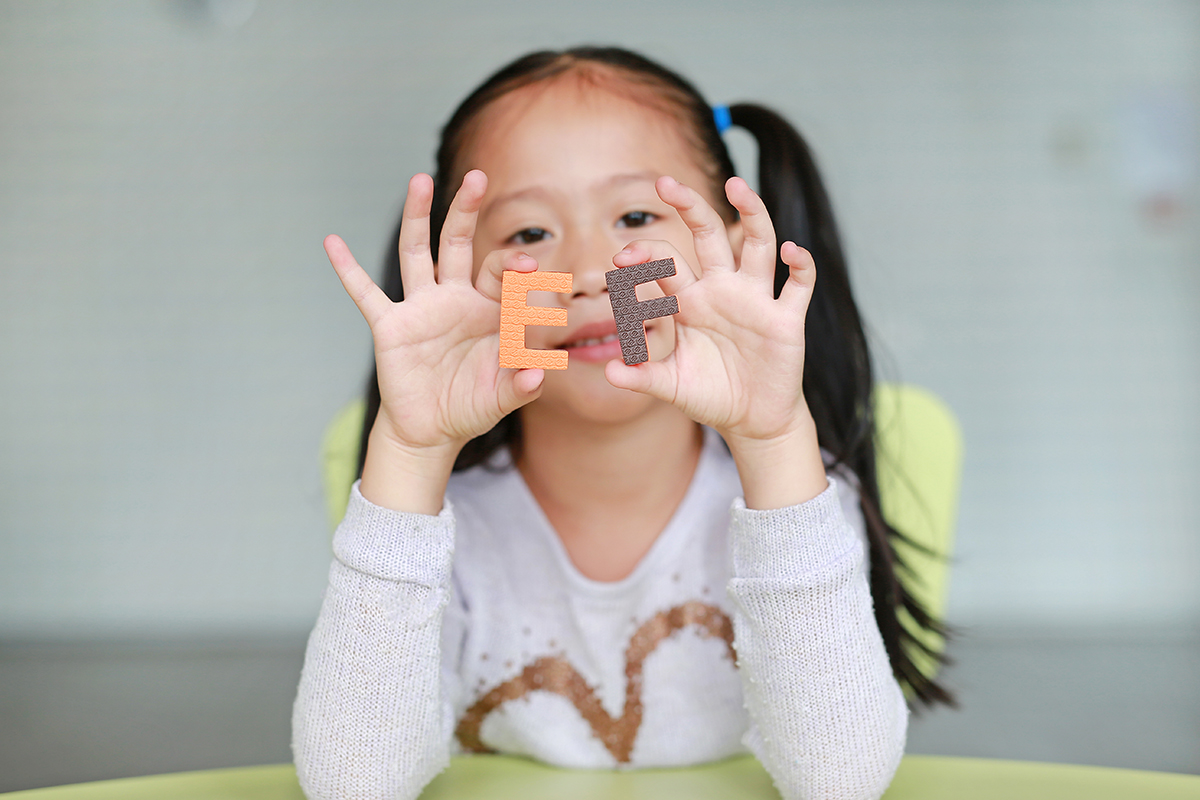
Thoughts on Executive Functioning Skills
Thoughts on Executive Functioning Skills
By Ari Goldstein, Ph.D.
When I first began teaching special education in the early 1990’s, the term executive functioning was unheard of. As a young teacher, I very quickly saw the importance of developing underlying cognitive skills to help my students learn more efficiently. They benefited tremendously from learning better strategy usage, time management, organization, and self-regulation skills. Over time, I developed a series of exercises and activities designed to strengthen these aspects of functioning in the classroom. What I found was that by developing their underlying cognitive skills and meta-cognition, I was able to help my students become better learners. We had no terminology or training programs for this, it was just good psychoeducational practice.
As I transitioned into private practice in the late 1990’s, I continued much of this work in a one on one fashion with the students I was tutoring. Around the year 2000, the term executive functioning began to emerge with some popularity in psychology and education circles. As I read more and more research on the subject, I began to understand that the underlying skills I had been working on with my students all along were, in fact, executive functioning skills. Good teachers have been working to develop these skills since the dawn of teaching, but finally there was a terminology and construct associated with what they had been doing in the classroom. I became so interested in the subject that I spent a good portion of my Ph.D. work investigating executive skills and their impact on learning and functioning.
Fast forward fifteen years. Executive functioning is now a buzz word heard throughout the academic community. Every parent, teacher, and school is now concerned with executive functioning. As a practitioner, I see this as a wonderful development. Unfortunately in our fast paced and testing based school system, the focus is primarily on test scores. We expect students to memorize and regurgitate information, but we do very little to develop their underlying self-monitoring, problem solving, and regulation skills. Schools are now more aware of executive functions, and their crucial impact on learning and problem solving throughout the life span. Many private tutors also work on executive functioning, however too often the focus is very heavy on organization skills and time management, with little work done to develop underlying frontal lobe functioning (Executive skills make their “home” in the frontal lobe of the brain).
Executive skills develop at different rates in different children. However, true executive difficulties do exist in many students, and tend to be even more prevalent in students with learning disabilities or disorders of attention (ADD/ADHD). Effective development of executive skills lies in not just teaching students how to organize themselves, but helping them develop into stronger problem solvers with better self-regulation skills. This can be done through a range of remediation programs, including Feuerstein’s Instrumental Enrichment, Quantitative EEG training (neurofeedback), meditation practice, and one on one skill based work designed specifically to strengthen frontal lobe functioning.
Our learning specialists at Cognitive Solutions take a very individualized approach to the development of executive skills. We work one on one with students to help strengthen their frontal lobe functioning, and help them develop a tool-belt of skills for stronger school based functioning. This differs from traditional tutoring, which tends to focus on the development of academic skills without work aimed at developing underlying areas of cognitive and information processing.
For more information on Cognitive Solutions Learning Center, please visit us online at www.helpforld.com, or feel free to contact us at 773-755-1775.
Learn More
Adult Attention Deficit Hyperactivity Disorder
Adult attention deficit hyperactivity disorder (ADD or ADHD) manifests itself through two main characteristics: inattention and hyperactivity/impulsivity. These symptoms, as well as the others that often accompany them, can cause numerous problems in a person’s day-to-day life. These problems include the inability to maintain stable relationships, poor performance at work, difficulty organizing and planning, and low self-esteem.
A person exhibiting symptoms of inattention makes careless mistakes, doesn’t listen being when directly spoken to, doesn’t follow through on instructions, fails to finish tasks, has difficulty organizing tasks and activities, is easily distracted, and is forgetful in their daily activities. That same person might exhibit symptoms of hyperactivity-impulsivity. These symptoms include: fidgeting with their hands and feet, often physically active in situations when it isn’t appropriate, and often interrupting the conversations of others.
Attention Deficit Hyperactivity Disorder always starts in childhood. This means, if an adult is just discovering they have ADHD they also had it as a child. Some people have fewer symptoms as they age and their brain develops further. It is difficult to diagnose ADD/ADHD in adults because many of the symptoms frequently stem from other conditions. It is important to note that Attention Deficit Hyperactivity Disorder does not cause other disorders. However, a number of conditions often accompany this disorder including mood, anxiety, and personality disorders.
If you feel that you or a loved one has the characteristics of adult Attention Deficit Hyperactivity Disorder, fell free to contact Cognitive Solutions Learning Center in Chicago at (773)755-1775 or online Adult ADD and ADHD for more information or to schedule a consultation.
Learn More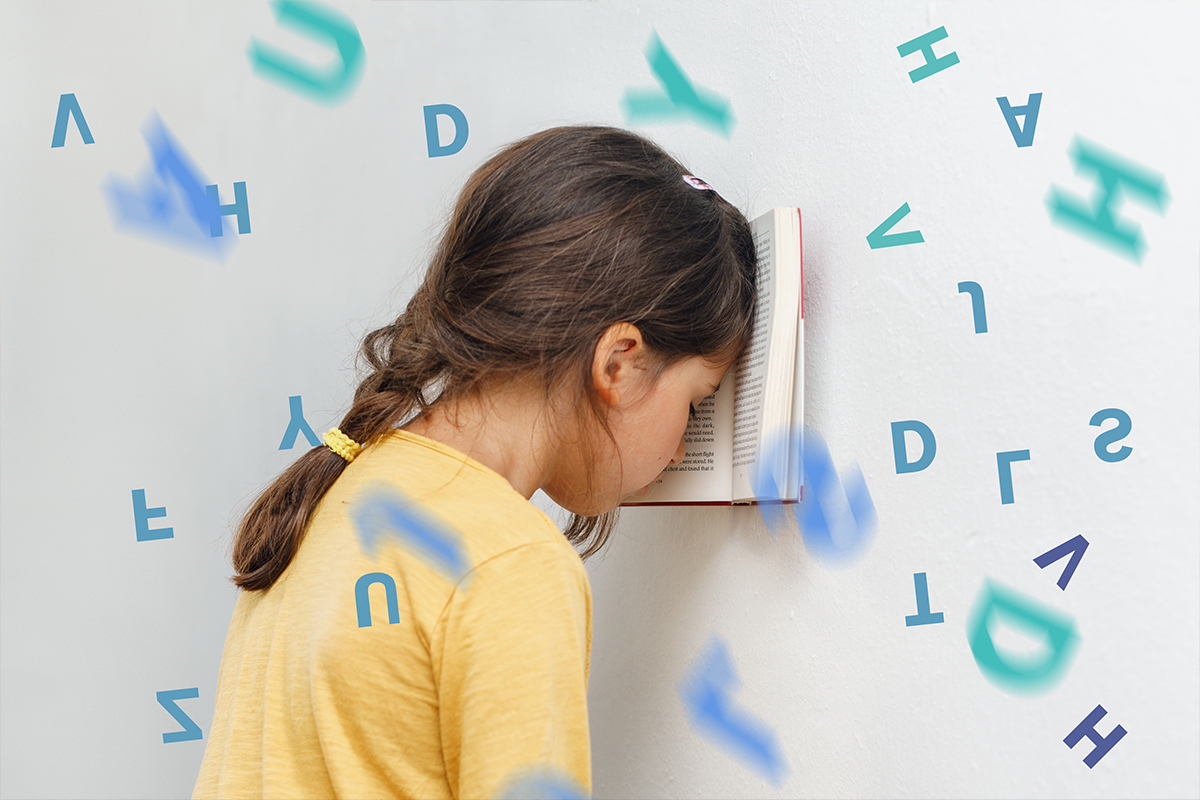
Neurofeedback For Dyslexia
EEG Neurofeedback For Dyslexia
Our previous blog discussed adult dyslexia, its symptoms, and how the proper testing and diagnosis is important for treatment planning. Along with the proper testing and diagnosis for a learning disability such as dyslexia, certain treatments are available that can improve brain function in a meaningful way.
Neurofeedback training or EEG Neurotherapy targets the symptoms of dyslexia at their foundation – the brain! Often visual, auditory, and/or executive processing deficiencies are present in those with learning disabilities, and neurofeedback directly targets these areas of brain function. Not only can it target the primary symptoms, but also the secondary symptoms of learning disabilities including social emotional and self esteem difficulties. Neurofeedback produces long-term changes in an individual’s functioning and mental health.
There is a great deal of research that supports EEG neurofeedback training for those with learning disabilities, cognitive deficits, and emotional dysfunction. In addition to this research, there is support for treating symptoms and deficits that are specifically related to dyslexia with neurofeedback. By examining various regions of the brain through brain imaging, including QEEGs (brainmaps), researchers have found that structural differences in the left side of the brain are present in those with Dyslexia and can be treated with neurotherapy. This makes sense given that the left side of the brain is primarily involved in the representation and comprehension of language. Breteler (2010) conducted research examining the improvements in children with dyslexia and specifically looked at reading and spelling. They were able to find a significant improvement in spelling for the children that received the neurofeedback training when compared to the control group that did not receive the neurofeedback training. Also, their findings suggest that improvement in attentional processes in the brain could be partially what is contributing to the spelling improvements (Breteler, 2010).
Attention difficulties (ADD/ADHD) are common for those of all ages with various learning disabilities. Hundreds of individuals with these diagnoses and more have seen improvements with neurofeedback training at Cognitive Solutions Learning Center in Chicago. Neurofeedback training has shown a high level of clinical success around the world, and is supported by a strong base of research in neuroscience. There is a solution to help individuals with brain based disabilities like dyslexia make changes to their brain that have a lasting impact, no matter their age.
Read more about The Cognitive Solutions Learning Center approach to Neurofeedback for Dyslexia Here
If you feel you or your child may suffer from dyslexia contact Cognitive Solutions Learning Center in Chicago at (773)755-1775, or visit us online at www.helpforld.com, to find out more about our programs.
*Breteler, M. (2010). Improvements in Spelling after QEEG-based Neurofeedback in Dyslexia: A Randomized Controlled Treatment Study. Applied Psychophysiology & Biofeedback, 35(1), 5-11.
Learn More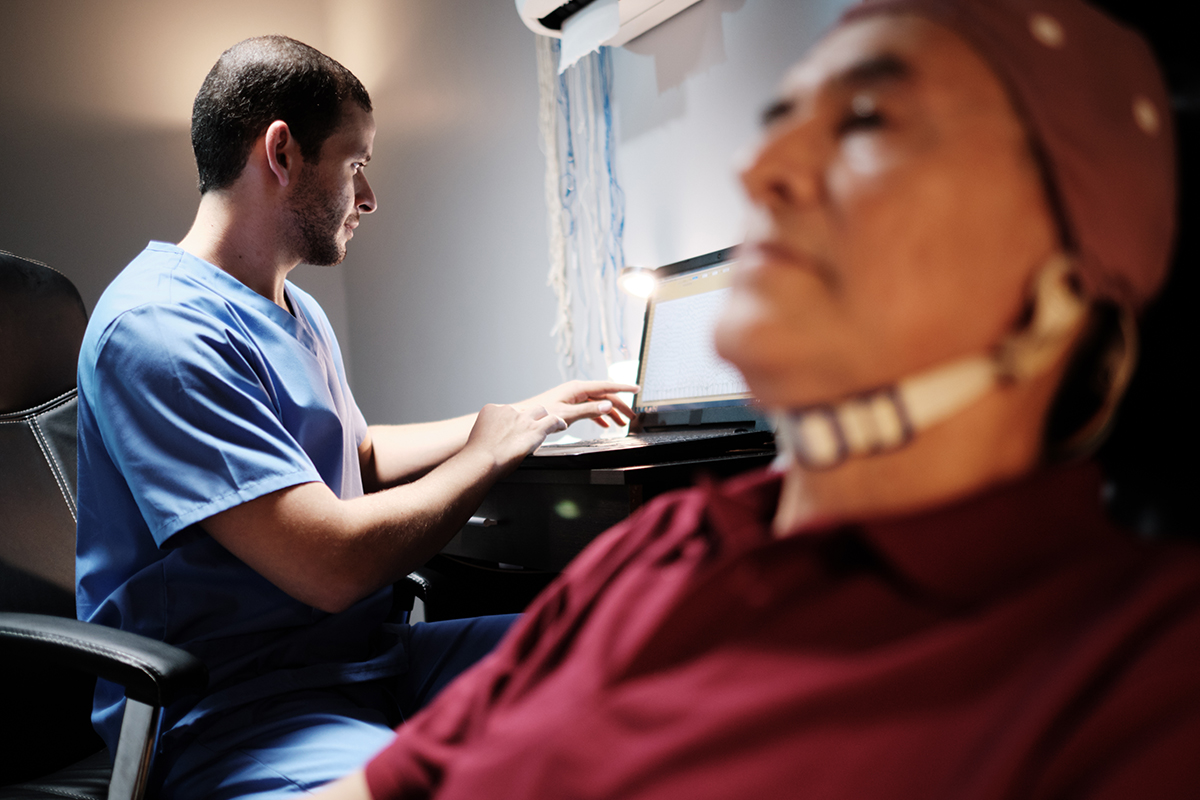
Attention Deficit Disorder ADD and ADHD Treatment in Chicago: Neurofeedback and Executive Functioning Training
By Ari Goldstein, Ph.D.
Most psychologists and doctors in Chicago have limited tools available for the treatment of Attention Deficit Hyperactivity Disorder (ADD and ADHD). Frequently, behavioral modifications and prescription medication are the only options presented to patients.
As an Educational Psychologist at Cognitive Solutions Learning Center in Chicago, I have noticed an alarming increase during the past decade in the number of referrals I receive for testing and treatment of disorders of attention (ADD and ADHD). What troubled me the most was that when the child received a diagnosis of ADHD (Attention Deficit Hyperactivity Disorder), of which ADD (Attention Deficit Disorder) is a subcategory, that child would almost certainly end up on medication.
It’s estimated by the Institutes of Mental Health that over 10% of the school-aged population have the disorder. That’s over two million children. And that’s conservative. If all these kids are put on meds, that seems scary to me as a parent and as a professional
I therefore became interested in researching the availability and effectiveness of non-medicinal treatments for attention disorders for those in Chicago. Through my research, I came across methods I have put together successfully to help children and adults without medication. I have developed a multifaceted, noninvasive approach to treating what is essentially a disability of regulation. People with Attention Deficit Hyperactivity Disorder (ADD or ADHD), whether children or adults, have difficulty regulating and controlling their behaviors, actions, thoughts, and problem solving. To treat the disorder, we need to know how the problems in regulation are manifesting and then develop an individualized plan to address the deficits.
It is essential to actively treat the regulation deficits, which offers a long-term solution, What I oppose is over-use of medication, not medication itself. Pharmaceuticals are an alternative to consider where a child’s behavior is destructive to himself or others, or for patients who have shown no improvement after following a non-medicinal protocol diligently for four to six months.
After a thorough evaluation including batteries of tests, if it appears diagnosis of Attention Deficit Hyperactivity Disorder (ADD ADHD) is appropriate, I will often send the client for a metabolic screening to rule out possible underlying blood-related causes for symptoms similar to ADD ADHD, such as blood sugar regulation difficulties, under or over active thyroid or lead poisoning.
The first prong my non-medicinal approach is nutrition and supplementation. What we put into our bodies has a tremendous role in how our brain functions. Sugar exacerbates ADD ADHD symptoms. The more stable the blood sugar level, the easier to regulate attention and the less of the anxiety experience which is often a part of ADD ADHD.
Removing processed foods from one’s diet and testing for and eliminating food allergies can also make a huge difference. Food allergies are a group of auto-immune disorders: the body is attacking itself. This can cause depression, anxiety and negatively affect one’s capacity for attention and learning.
Supplementing diets with Omega 3 fish oil from fatty fish like salmon and sardines supports enhanced brain function: Many Americans are deficient in this, and this can contribute to a range of psychological and cognitive difficulties. Likewise, pro-biotic foods like live culture yogurts improve general health and cognitive functioning.
The second prong is exercise and sensory input. Exercise helps balance the chemicals in our brain. This is especially important if a child is spending lots of time in front of video games, TV and computers. From the earliest days, these devices wreak havoc on our attention span: If a child spends more than two hours a day engaged in these pursuits, there is a greater chance of developing ADHD. From my perspective, the spike in diagnosis at least in part to children getting used to such constant and rapid media stimulation that it’s hard to adjust to the real world.
I have frequently observed that young boys diagnosed with Attention Deficit Hyperactivity Disorder (ADD ADHD) are hungry for sensory stimulation. I frequently put them on a diet with crunchy foods, and suggest activities like swinging on a swing and swimming, both to work off energy and calm them down. Tae Kwon Do is recommended as an excellent vehicle for engaging in physical activity with others, while instilling discipline and focus.
The third prong of my approach is executive functions training. These functions have a number of components that are found in the frontal lobe, from cognitive planning to physical organization, from controlling emotional outflow to working memory. Developing executive functioning and cognitive organization leads to physical organization,
A thorough evaluation of these functions will show which areas need to be addressed. While medications can help the behavioral and academic aspects, it is short lived. We do a child disservice when we do not train them in specific executive function skills. Parents can support this development as well through ensuring their children have structure and routine, which are comforting, and logical consequences where behaviors require modification.
The fourth prong, which is the leading non-medicinal treatment for ADHD, is neurofeedback. The brain is an electrical matrix with different signals being sent, but the signals may not be functioning optimally. The neurofeedback process consists of a video game the child plays with their mind. Initial brain imaging [QEEG] helps to show what is functioning optimally and what is not. Neurofeedback provides training to recognize what a brain wave state feels like, so we can shift it more easily. This teaches children with ADHD how it feels to shift their brain from a relaxed to an attentive state.
Individuals who wish to remain medication free are highly encouraged to explore the four prong treatment methodology laid out in this article. For more information, or for help in the Chicago area, please contact us.
Learn More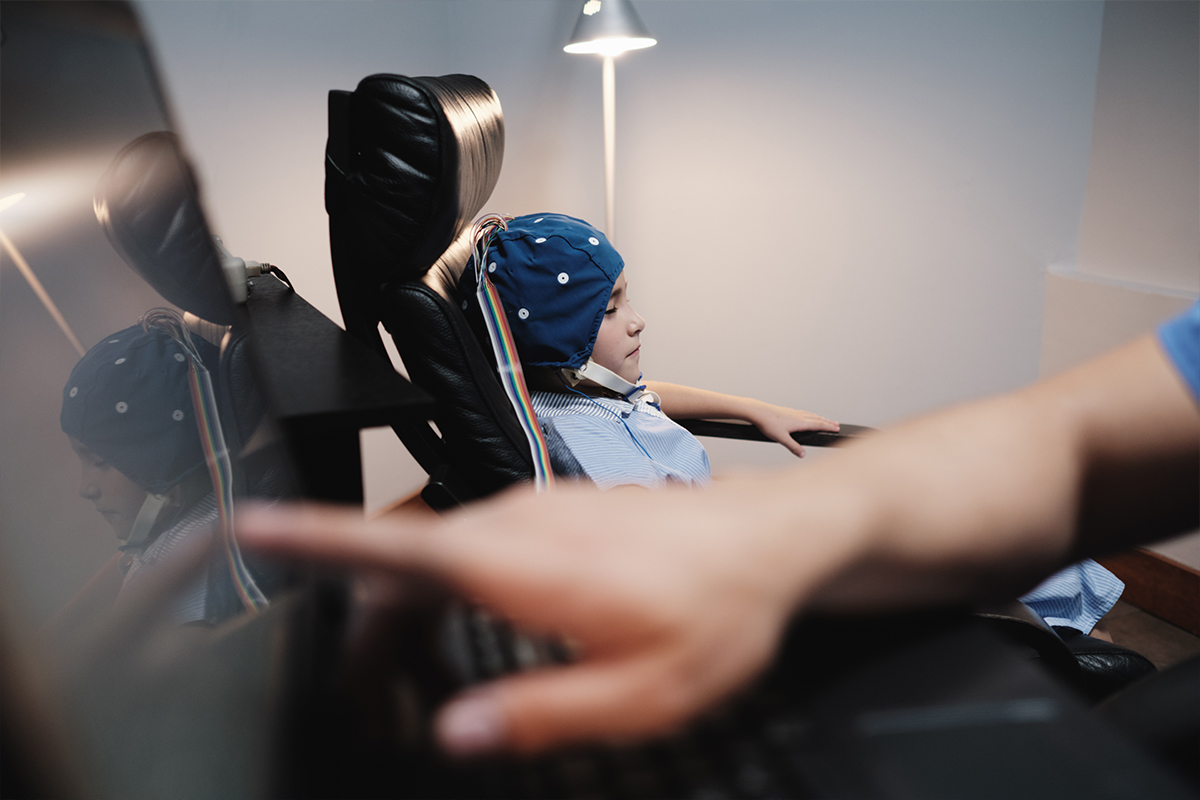
Reap the Benefits of Neurofeedback
FOR IMMEDIATE RELEASE
(Chicago, Illinois, 17 January 2012)
A Neurofeedback session typically begins with a quantitative EEG. The EEG is done with the use
of sensors that are placed on top the head, and it is intended to measure brainwave activity.
This information will be used as a reference and an indicator of how your brainwaves are
affecting your train of thought. From then on, the professional therapist will create a therapy
that is tailored especially for your own needs. A person who is undergoing Neurofeedback
is called a “trainee,” basically since the patient is being trained by the therapist to modulate
brainwave activity and achieve certain results. These results are almost instantaneous but
more often not trainees are not aware of these changes immediately, but they certainly can
observe changes in their state of mind even outside the Neurofeedback session. The training
will specifically teach a person to maximize activity in certain frequencies while keeping down
others in a bid to regulate or balance the frequencies so the brain is not overloaded with too
much activity.
With the help of Neurofeedback, a person can achieve relaxation as well as minimization of the
brainwave activity that is causing him or her to be constantly anxious, irritated or suffer lack
of calm in most situations. In fact, according to the International Society for Neurofeedback
and Research, the Neurofeedback therapy is ideal for people who are suffering from attention
disorders like Attention Deficit Hyperactive Disorder as well as Epilepsy. The Institute is also
undergoing research to determine the effects of the therapy on people who have Autism,
headaches, insomnia, anxiety, substance abuse, TBI and other pain disorders. So far, the ISNR
is saying that the results of their research into these disorders are “promising.” There are more
grounds being gained each day in research and the Cognitive Solutions approach can prove this.
One great thing about undergoing Neurofeedback therapy is the fact that it is non-invasive and
requires no medicine. The CSLC approach stresses non-medicinal in all that we do. It does not
require surgery, so you can walk out of the clinic normally and go about your business like it
did not happen at all. Of course, you will be stepping out of the therapist’s clinic feeling like a
new version of yourself thanks to the training you get from the Neurofeedback center at CSLC.
Several people who have gone through the process have seen tremendous results. (see our
about us page). Testimonials from successful trainees have shown that Neurofeedback has had
a positive effect on their lives and daily functioning, which means that Neurofeedback really
works and no matter what state your are in, it is always beneficial.
If you are interested in undergoing Neurofeedback training, contact Cognitive Solutions
Learning Center Inc. The Center is located in Chicago, Illinois. Contact the center by calling us
at phone number (773) 755-1775, or use the contact form found online at www.helpforld.com.
With Cognitive Solutions, you are sure to experience a positive change in your life.
Contact:
2419 N. Ashland Ave. Chicago, IL 60614
Phone: (773) 755-1775
Info@helpforld.com

